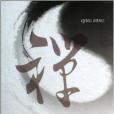《禪宗對邵雍重新定義太極思想的影響》是2013年人民出版社出版的圖書。
基本介紹
- 中文名:禪宗對邵雍重新定義太極思想的影響
- 外文名:The Influence of China Buddhism on Shao Yong's Redefinition of the Supreme Ultimate
- 出版社:人民
- 頁數:327 頁
- 開本:16 開
- 作者:明清
- 出版日期:2013年11月1日
- 語種:簡體中文
- ISBN:7010109370
基本內容, 出版信息, 目錄,
基本內容
明清編著的這本《禪宗對邵雍重新定義太極思想的影響》將邵雍主要哲學著作《皇極經世書》中的心性學及其賴以產生的禪學思想作為考察對象,力圖通過對二者原理、內涵、特點、思想淵源的考察、分析,理清邵雍哲學中禪學追求的基本思路、重要特色及其賴以產生的時代背景。廣泛引用東西方學者六百多種參考文獻及其研究成果,從歷史和文化背景,對邵雍的生平和易學思想傳承過程中所留下的...顯示全部信息
出版信息
《禪宗對邵雍重新定義太極思想的影響》由人民出版社出版。
目錄
Preface
Abbreviations
Chapter One: Introduction: The Existing Scholarship and Disser-tation Prospectus
1.1. The Existing Scholarship
1.2. A Summary of Existing Scholarship
1.3. My Research Subject
1.4. My Reasons for Selecting This Topic
1.5. The Significance and Value of this Research
1.6. Research Method: Hermeneutics
1.7. Dissertation Outline
1.8. The Sources :
Conclusion
Chapter Two: Historical and Philosophical Background
2.1. The Political, Economic and Social Background
2.2. Cultural Background
2.2.1. The Reinvented Song Chan Buddhist School
2.2.2. Chan Buddhism in Literati Culture
2.2.2.1. The Tea Ceremony (chadao)
2.2.2.2. Chan Poetry
2.2.2.3. Chan Painting
2.2.2.4. The Art of Calligraphy (shufa yishu)
2.2.2.5. Literati' s Relationship with Chan Buddhism
2.2.3. The Rise of Neo-Confucianism and the Song Book of Chan(Songyi)
Conclusion
Chapter Three: Buddhism's Influence on the Life of Shao Yong
3.1. The Life of Shao Yong
3.2. Buddhist Influence on Shao Yong ',s Family
3.3. Shao Yong' s Study of Buddhism and his Practice of Chan
3.4. The Existing Scholarship on the non Buddhist Influence on Shao Yong' s Life
Conclusion
Chapter Four: Shao Yong's Redefinition of the Supreme Ultimate: The Mind as the Supreme Ultimate
4.1. Beginnings and Historical Developments: An Overview of the Supreme Ultimate
4.2. Shao Yong' s Redefinition of the Supreme Ultimate: The Mind as the Supreme Ultimate
4.2.1. The Innate Theory (Xiantian yixue)
4.2.1.1. Diagrams of the Sequence of the Eight Trigrams and Sixty-four Hexagrams
4.2.1.2. The Manifestation of the All Things
4.2.2. The Eight Trigrams and Sixty-four Hexagrams Directional Position Diagrams (bagua he liushisi gua fangweitu)
4.2.3. The Mind as the Supreme Ultimate
4.2.3.1. The Concept of One, Spirit and Images
4.2.3.2. The Concept of Numerals and Principle
4.2.3.3. The Concept of Principle and Mind
4.2.3.4. "One Mind" and the Supreme Ultimate
4.2.3.5. The Concept of "the Innate Theory is the Theory of Mind"
4.3. The Acquired Theory
Conclusion
Chapter Five: A Survey of Existing Research on the Subject
5.1. Was Shao Yong influenced by Mencius' Concept of"All Things are Complete within" * Me''?
5.2. Was Shao Yong influenced by Confucius' Concept of "Intrinsic Nature of Mind"
5.3. Was Shao Yong influenced by the Confucian Concept of "Investigation of Things (gewu) and Extension of Knowledge (zhizhi)"
5.4. Was Shao Yong Influenced by Philosophical and Religious Daoism?
Conclusion
Chapter Six: The Concept of "Realizing the Mind and Seeing Self-Nature" and Its Influence on Shao Yong's Redefinition of the Supreme Ultimate
6.1. Huineng' s Concept of "Realizing the Mind and Seeing Self-Nature"
6.1.1. An Analysis of Sources
6.1.2. "Buddha-Nature" and "praj"
6.1.3. Self-nature
6.1.4. Realizing the Mind and Seeing Self-Nature (shixin jianxing)
6.1.5. "Sudden-Enlightenment" Path of "No-Thought"
6.2. The Influence of Huineng upon Shao Yong' s Redefinition of the Supreme Ultimate
6.2.1. Buddha-Nature as Self-nature in Mind and Mind as the Supreme Ultimate
6.2.2. Self-Cultivation Pointing Directly at the Mind
6.2.3. Orientation towards Humanism
6.2.4. Merging of Worldly Dharma and Transmundane Dharma
Conclusion
Chapter Seven: Diagrams and Pictorial Schemes for the Concept of "Realizing the Mind and Seeing Self-Nature" and its Influence on Shao Yong
7.1. Zongmi' s Chan Diagrams and Pictorial Schemes
7.1.1. Zongmi and His Works
7.1.2. Chan Hermeneutical Diagram Indicating the Mind of Sentient Beings
7.1.3. The Relationship among Mind, the Supreme Ultimate and Alayavijnana
7.2. Linji Chan's Concept of "Four Discemments of Person and Object" (siliaojian)
7.3. The Caodong Chan Concept of Jeweled Mirror Samadhi(baojing san mei寶鏡三昧)
7.3.1. Caoshan Benji, Dongshan Liangjia and Huihong Kuanfan
7.3.2. Jeweled Mirror Samadhi (baojing sanmei)
7.3.3. The Influence of Jeweled Mirror Samadhi on Shao Yong' s Redefinition of the Supreme Ultimate
7.3.4. Venerable Taixu' s (1890-1947) Scholarship
Conclusion
Chapter Eight: Chart Buddhism's Influence upon the Lineage of the Supreme Ultimate
8.1. The Issue of Whether the Lineage of the Supreme Ultimate Began with chen Tuan (906-1032)
8.2. The Issue of Whether the Supreme Ultimate Lineage can be Traced Back to Mayi Daozhe
8.2.1. The Existing Scholarship on the Subject
8.2.2. The Credibility of Zhu Xi's Point of View
8.2.3. The Reliability of Chao Gongwu' s Account of the Supreme Ultimate Lineage in A Record of Junzhai Studies( Junzhai dushu zhi)
8.2.4. Mayi Daozhe and His Relationship with Chen Tuan as Evidence for Chan Buddhist Influence
8.3. The Issue as to whether the Supreme Ultimate Lineage can be Traced Back to Chan Masters Guoyi (714-792) and Shouya (Early Northern Song Dynasty, Date Unknown)
8.3.1. The Supreme Ultimate Lineage as Recorded in
A Collection of Direct Approaches for Returning to the Source ( Guiyuan zhizhiji)
8.3.2. The Overlooked Source: the Lineage of the Supreme Ultimate as Described in the Records of Helin Temple (nelinsi zhi鶴林世志)
Conclusion
Chapter Nine: Conclusion
Appendix A The Lineage of Chinese Chan Buddhism
Appendix B Collected Diagrams
Appendix C List of Chinese Characters
Bibliography

